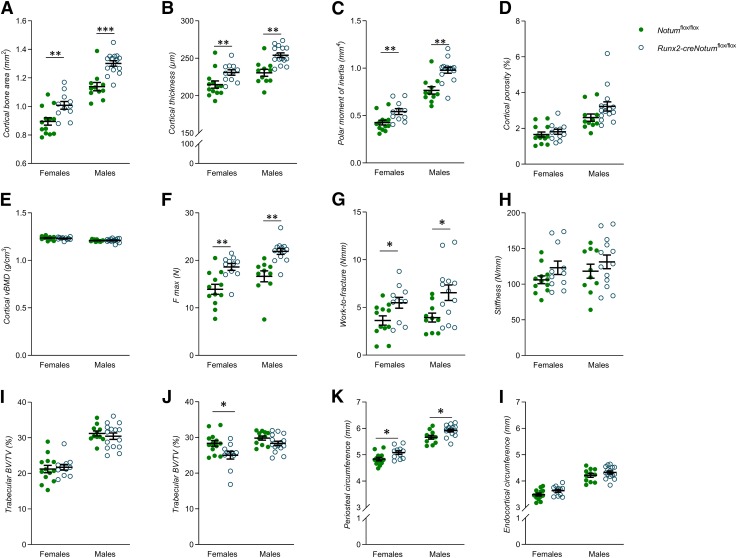Figure 3.
Osteoblast-derived NOTUM reduces cortical but not trabecular bone mass. A–E) Cortical bone area (A), cortical thickness (B), mean polar moment of inertia (C), cortical porosity (D), and cortical volumetric BMD (E) of the femur as measured by μCT in Runx2-creNotumflox/flox (female, n = 11; males, n = 15) and Notumflox/flox (females, n = 13; males, n = 11) mice. F–H) Maximal load (F max) (F), whole-bone work-to-fracture (G), and (H) structural stiffness (H) of the humerus as measured by 3-point bending in Runx2-creNotumflox/flox (female, n = 11; males, n = 15) and Notumflox/flox (females, n = 13; males, n = 11) mice. All biomechanical data are whole-bone data. I, J) Trabecular BV/TV in the femur (I) and vertebral body L5 (J) in Runx2-creNotumflox/flox mice (females, n = 11; males, n = 15) and Notumflox/flox mice (females, n = 13; males, n = 11). K, L) Periosteal (K) and endocortical circumference (L) of the femur as measured by µCT in Runx2-creNotumflox/flox (females, n = 11; males, n = 15) and Notumflox/flox (females, n = 13; males, n = 11) mice. Unless otherwise stated, the results refer to 17-wk-old mice. All values are given as means ± sem. *P < 0.05, **P < 0.01 vs. Notumflox/flox mice (Student’s t test).

